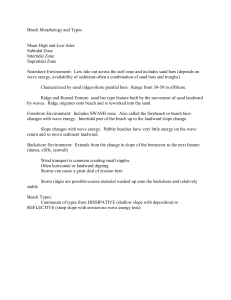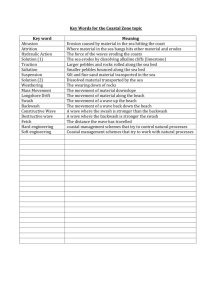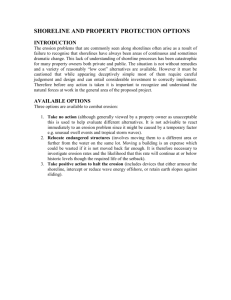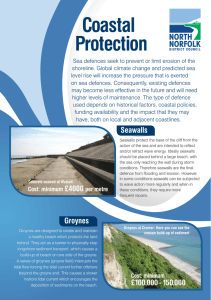The Effect of Seawall Construction on the Coastline
advertisement
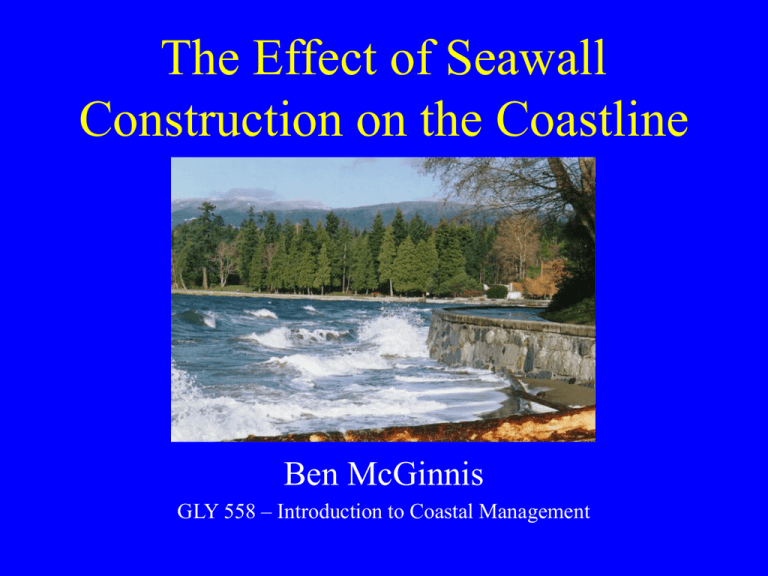
The Effect of Seawall Construction on the Coastline Ben McGinnis GLY 558 – Introduction to Coastal Management Seawalls, Bulkheads, and Revetments • Seawalls are usually massive, vertical structures used to protect backshore areas from heavy wave action • Bulkheads are large vertical retaining walls used to reduce loss of land to the sea and to protect backshore areas from wave action • Revetments are shoreline structures generally sloped in such a way as to mimic the natural slope of the shoreline profile and dissipate wave energy as the wave is directed up the slope Why don’t they work? • Lacks the flexibility of a dune system • A change in beach slope is not allowed • Longshore currents scour sand from the base of the seawall • Loss of sand from reflected wave energy Wave Energy • Dissipates over the surface of a natural beach • Seawalls reflect wave energy • Reflected wave energy stirs up the sand and washes it out to sea Sandbridge Beach, Virginia • Bulkheading began around 1988 • Primarily Steel • Beach has narrowed and flattened • Rebuilt bulkheads • Old bulkheads in surfzone • Beach nourishment 1998 and 2002 Interesting Points from: The Beaches are Moving: The Drowning of America’s Shoreline Kaufman, W., and Pilkey, O.H., 1983 • • • • • No erosion problem exists on beaches until people build on them. Anything built along the coast increases erosion rates due to the lack of flexibility in the beach system. Once beach protection is started it’s can’t be stopped. To “save” the beach, we must destroy it. The cost to save property is greater than the value of the property. Seawalls are constructed to protect beachfront homes, but how can you have a beachfront home when there is no beach?

